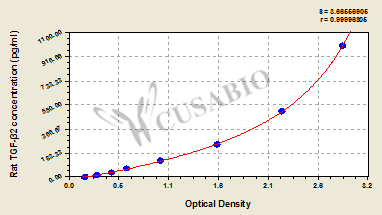The Rat Transforming Growth factor β2 (TGF-β2) ELISA kit is a high-quality tool for quantitative measurement of TGF-β2 levels in rat serum, plasma, and tissue homogenates.
The kit is designed to detect Transforming growth factor beta-2 proprotein, encoded by the Tgfb2 gene in Rattus norvegicus (Rat), which plays a key role in signal transduction pathways,cell growth, cell differentiation, apoptosis and cellular homeostasis.
With a wide detection range of 15.6 pg/mL-1000 pg/mL and a sensitivity of 3.9 pg/mL, this sandwich ELISA kit ensures accurate and precise measurements of TGF-β2 levels, even at low concentrations. The assay time is quick, ranging from 1-5 hours, with a sample volume of only 50-100ul.
The Rat Transforming Growth factor β2 (TGF-β2) ELISA kit is ideal for researchers studying signal transduction in the context of various diseases and conditions. The kit is simple to use, and the results are easily readable at a detection wavelength of 450 nm.






